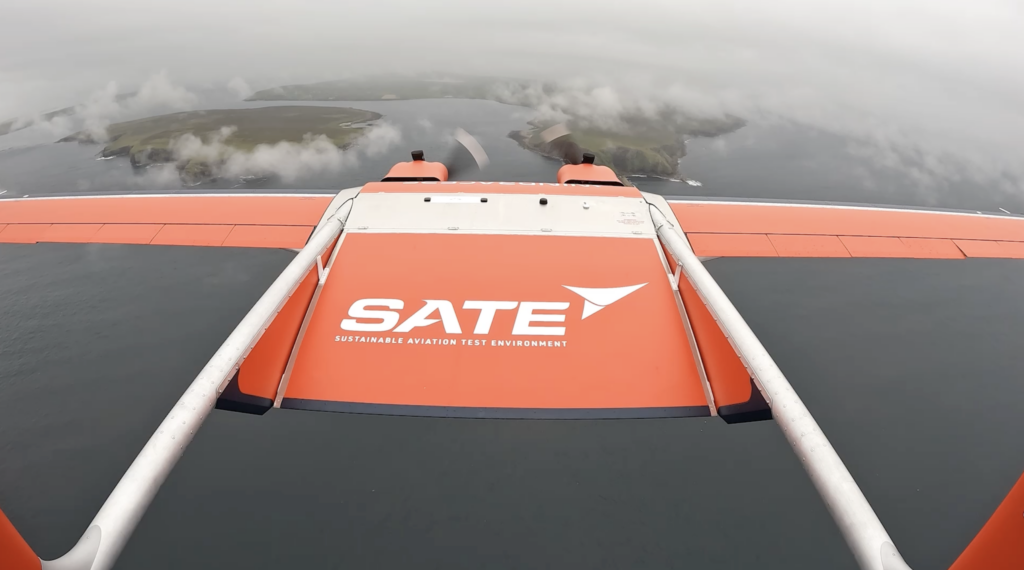Scottish Seabird Colonies Unaffected By Windracers ULTRA Flights

Leading ornithologist finds no signs of disturbance among seabirds on Eday, Orkney
A study on seabird colonies conducted by ornithologist Dr. Roy Armstrong and ecologist Caitlin Henderson has found no signs of disturbance as a result of recent drone flights operated by Windracers to and from Eday in Orkney. The findings are significant given drone companies are looking to serve Scotland’s remote island communities, where numerous sensitive bird species are located.
Windracers, the UK-based self-flying cargo aircraft manufacturer, commissioned the seabird colony disturbance study alongside its recent drone delivery trial in Orkney, which saw Windracers ULTRA – a robust, twin-engine fixed-wing aircraft with a 10-metre wingspan – moving autonomously between the islands of Eday, Westray and North Ronaldsay in Orkney a number of times each week.

Ornithologist Dr. Roy Armstrong and ecologist Caitlin Henderson closely monitored a number of seabird colonies before, during and after drone flights over the Calf of Eday, an uninhabited island which supports 32 species of breeding birds and is designated as a Special Protection Area (SPA) for its importance as a nesting area. This included the cormorant colony and nesting Fulmars, as well as a wider range of nesting seabirds around the cliffs to the North of the Calf of Eday – such as guillemots, razorbills, kittiwakes and gulls.
The study found that neither the auditory nor visual impact of the drone caused any adverse effect to the behaviour of any species during time of survey, although the taxiing drone appeared to attract foraging common gulls – a species known to follow agricultural machinery during hay cutting. The study did identify disturbances as a result of a passing sheep, some passers-by and a boat.
According to Dr. Armstrong, one of the country’s most experienced ornithologists with over 30 years of commercial experience including numerous bird surveys at and around UK airports, the observation that no species were disturbed by the drone flights is consistent with other observations of drone/bird interactions. This includes drone monitoring of gull breeding colonies in which breeding birds appear to be oblivious to the presence of the drone. The ornithologist also pointed out the noise levels produced by Windracers ULTRA are very low compared with commercial or military aircraft and would not be expected to produce an adverse impact.
“The trials clearly demonstrated that there was no disturbance effect observed at the chick rearing stage of a wide range of species. This is an important stage as disturbance has the potential to interfere with chick feeding and sheltering of chicks by adults during adverse weather condition,” said Dr. Armstrong
“In continual advancement and improvement of ULTRA, Windracers is keen to understand any potential impacts from our flights on bird colonies and other wildlife in the areas where we operate. The findings of this study will no doubt be of reassurance to Orkney residents as well as the birdwatching community around the world,” comments Rob Datson, Chief Operations Officer at Windracers.
The cargo delivery trial using Windracers ULTRA was part of the Sustainable Aviation Test Environment (SATE) programme and was part-funded by the UK Research and Innovation (UKRI) Future Flight Challenge, delivered by Innovate UK and the Economic and Social Research Council. Its aim is to demonstrate readiness to operate a commercial drone service that can transport meaningful payloads reliably, cost-effectively and sustainably for the benefit of communities in remote locations, such as the Highlands and Islands.
The Civil Aviation Authority (CAA) recently announced that SATE was among six projects that have been selected for trials to help safely integrate drones flying beyond visual line of sight (BVLOS) of their operator into UK airspace. Consortium partner Highland and Islands Airports Ltd (HIAL) – which also collaborated with Nature Scot’s Species on the Edge and the RSPB to establish a safe nesting habitat for the endangered Little Tern bird at Islay Airport – will lead the project in conjunction with Windracers.
Windracers ULTRA – which has a useful payload capacity of up to 100 kg and can travel middle-mile distances of up to 1,000 km – is able to take off, fly and land safely without the need of a remote pilot thanks to its autopilot and mission control software. Its systems are dual or triple redundant to ensure it can fly safely in all conditions.